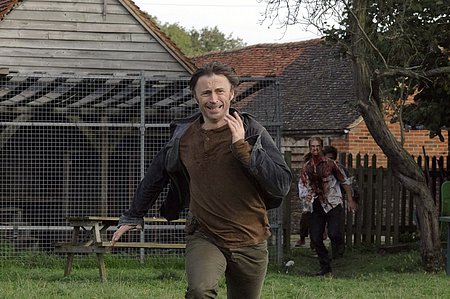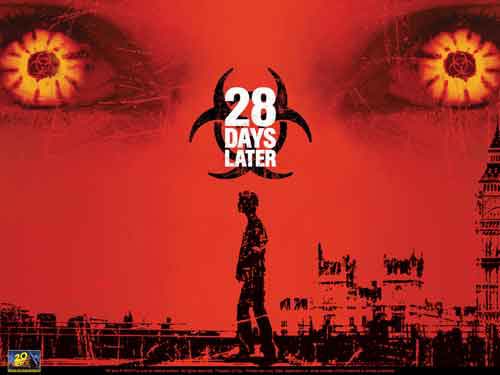M J Steel Collins shambles through the Undead in British and Irish tradition
Forget the The Walking Dead, or any other zombie themed TV show or movie that might come to mind, there are tales galore in the British Isles and other parts of Western Europe of the dead rising from their graves, in order to scare the living.
Sometimes defined as a type of ghost, and are more properly defined as revenants, a term deriving from the Latin reveniens, meaning ‘returning’.
And if we look to Norse mythology, which had a significant influence on British traditions, we also find the terrifying draugr, another undead being; the term draugr literally translates as ‘again walker’.
There are many reasons why a corpse might reanimate and return to the living.
Perhaps to right a wrong, though mainly it seems they just want to terrify their nearest and dearest, as well as other members of their erstwhile community, for no particular reason.
They could spread disease among both humans and livestock.
Those likely to rise from their grave might have died in violent circumstances, perhaps murder, or in life, didn’t adhere, nor believe in, the tenents of Christianity.
Today, we might find many similarities in revenants to vampires, but there were quite a few key differences: for instance, revenants can move about during the day, and they don’t need to be bitten by another of their kind to come to life, though some did move about in packs.
They also didn’t suck blood, although when their graves, to which they returned after going about their nefarious deeds, were exhumed, the corpse within might be bloated with blood that oozed in great profusion when the dead body was pricked.
This is thought to have more to do with the process of decomposition than anything creepier.
Shamble On: William Of Newburgh
William of Newburgh has several early tales of the undead in his History of English Affairs, which covers English history between the 11th and 12th centuries.
The first, and often recounted, occurred in Buckinghamshire, when a man rose from his grave and tormented his wife and family.
The undead man would appear at the window, and nothing his beleaugered relatives did would scare him away.
Things didn’t improve when the corpse began walking about during daytime.
Eventually, the Bishop of Lincoln got involved, and after seeking advice, exhumed the grave of the undead man, whose corpse was still fresh, despite the passage of time.
The Bishop had the body cremated, and the haunting, if it could be called that, stopped.
Another tale told by William comes from York, involving an outlaw who married and was soon jealous of his wife.
Hiding in the rafters of their house, the envious husband caught his wife in a compromising position with another man.
The irate husband fell from the rafters, severely injuring himself and dying hours later.
After burial, his risen corpse took to wandering the town, as William describes:
“A Christian burial, indeed, he received, though unworthy of it; but it did not much benefit him: for issuing, by the handiwork of Satan, from his grave at night-time, and pursued by a pack of dogs with horrible barkings, he wandered through the courts and around the houses while all men made fast their doors, and did not dare to go abroad on any errand whatever from the beginning of the night until the sunrise, for fear of meeting and being beaten black and blue by this vagrant monster.”
After some locals were killed by this particularly nasty revenant, a group took up their spades, hastened to the grave and began to dig, uncovering the corpse not too far below, swolled with blood and its shroud in shreds.
One of the party put a hole in the corpse, from which the blood flowed freely. Then it was dragged back to the town to be cremated, in a scene straight out of the best Hammer Horror.
One of the townspeople decreed “that the pestilential body would not burn unless its heart were torn out, the other laid open its side by repeated blows of the blunted spade, and, thrusting in his hand, dragged out the accursed heart. This being torn piecemeal, and the body now consigned to the flames…”
Uist Undead
In the Outer Hebrides, the islanders of South Uist found themselves in something of a predicament when the dead decided to rise from their graves and roam about.
Folklorist Otta Swire describes in The Outer Hebrides and their Legends that at a loss for what to do, the islanders decided to quit their home, watching from boats as cadavers, ranging from the recently dead, “who looked much as they had in life”, and the rather more decayed, shuffled about.
As the elders debated on what to do, a cock appeared on the roof of a cottage, crowed, and the undead returned to their graves, never to rise again.
Keeping Them Dead And Buried
Fear of corpses rising from the grave was a very real thing, as the exhumation of medieval era graves has shown.
For example, an archaological dig of a graveyard dating back to the 8th century in Roscommon, Ireland, between 2005 and 2009 uncovered two male skeletons lying side by side, each with stones forced into their jaws.
This was a common method to prevent the dead from rising. Another example was found on the haunted island of Poveglia, in the bay of Venice, Italy.
However, other measures had to be taken once the dead reanimated. As already seen in the stories recounted by William of Newburgh, burning the corpse was one such method. Others included beheading, staking, laying heavy stones across the corpse or burying it upside down.
The belief was that those who had led a particularly unholy life outside the church, suicides or criminals were likely to rise.
Or as, previously mentioned, had a particular task to carry out. This was certainly the case in Inverness in the aftermath of the 1745 Jacobite uprising, although in this instance, the dead didn’t rise from the local graveyard to torment the town’s inhabitants, but to protect them from advancing English soldiers ordered to burn Inverness to the ground!







